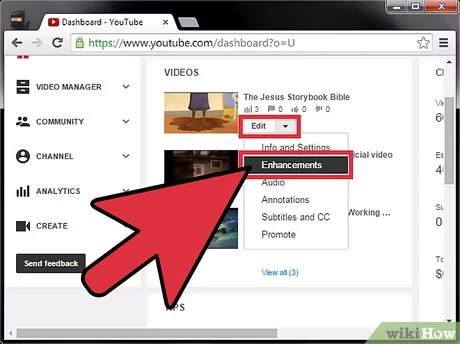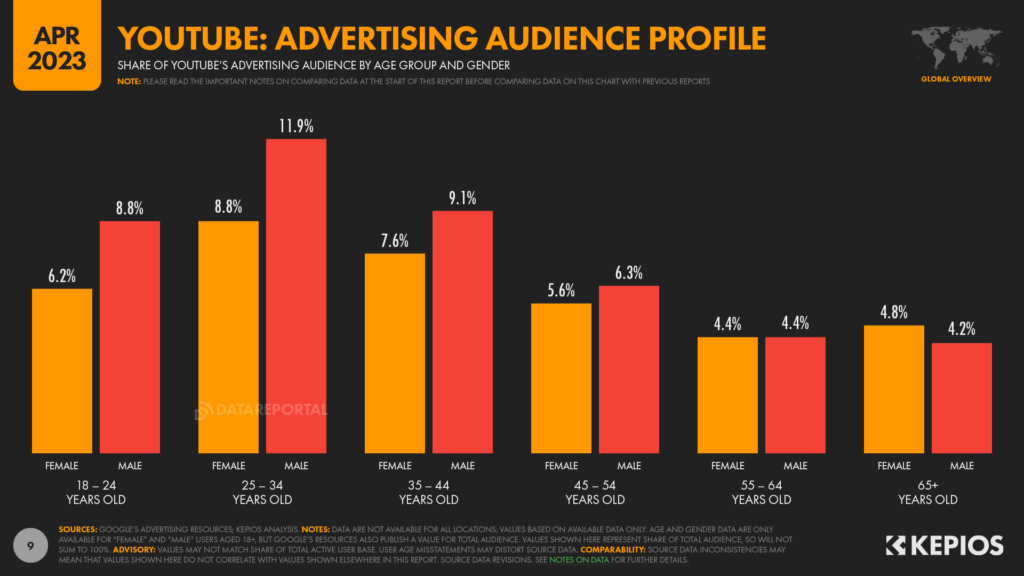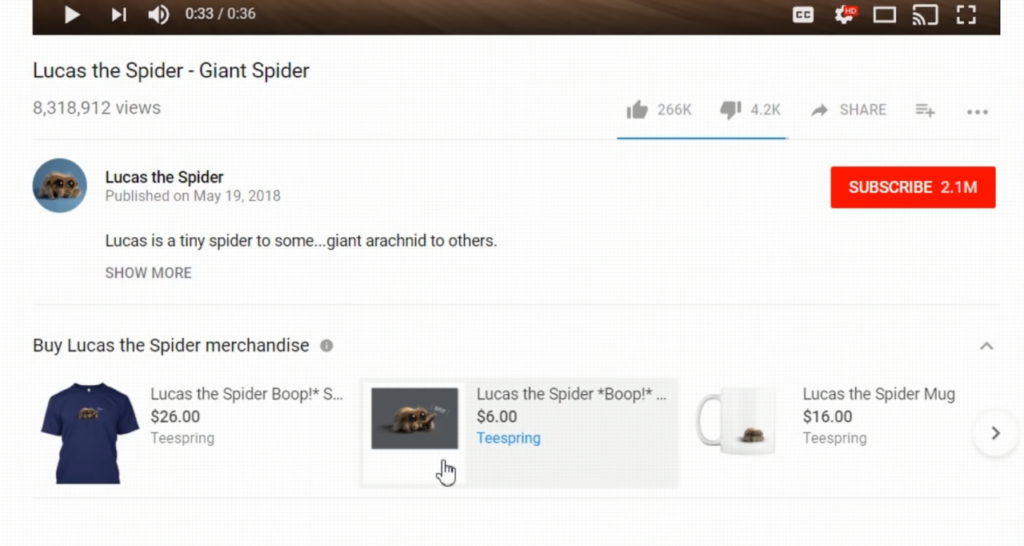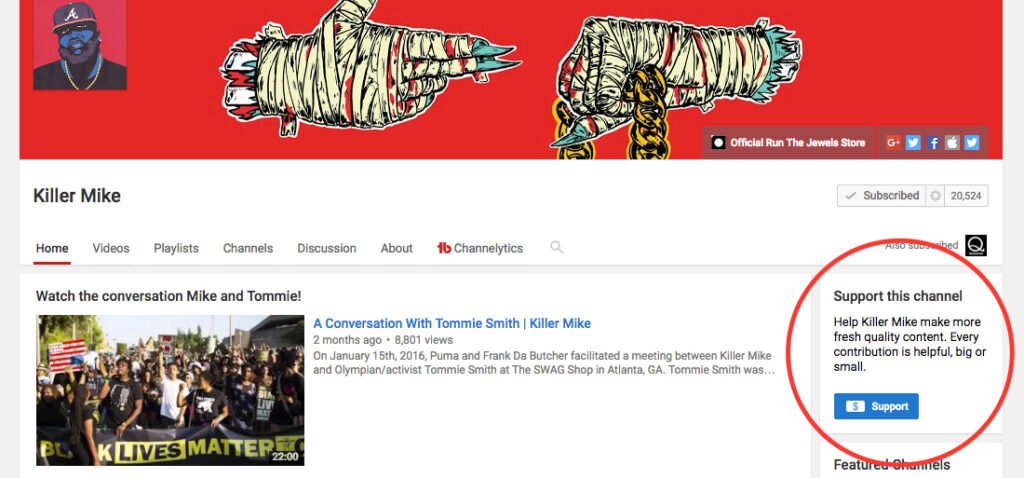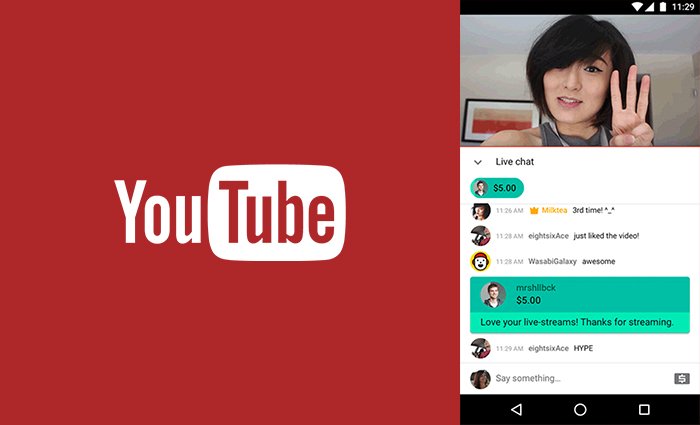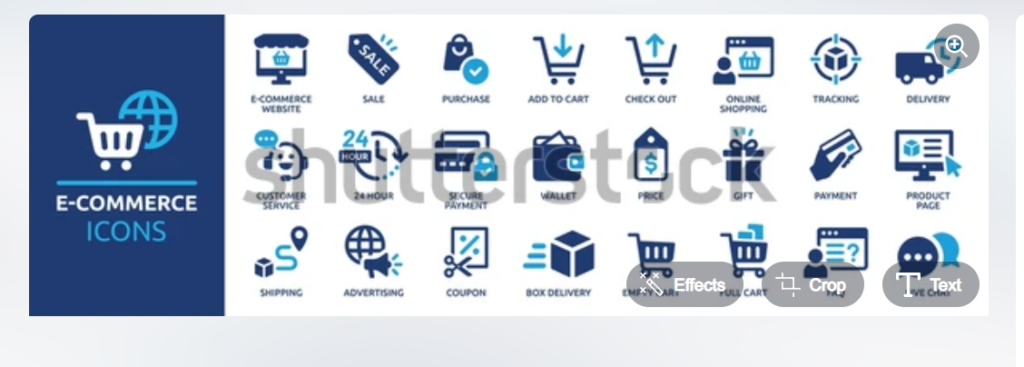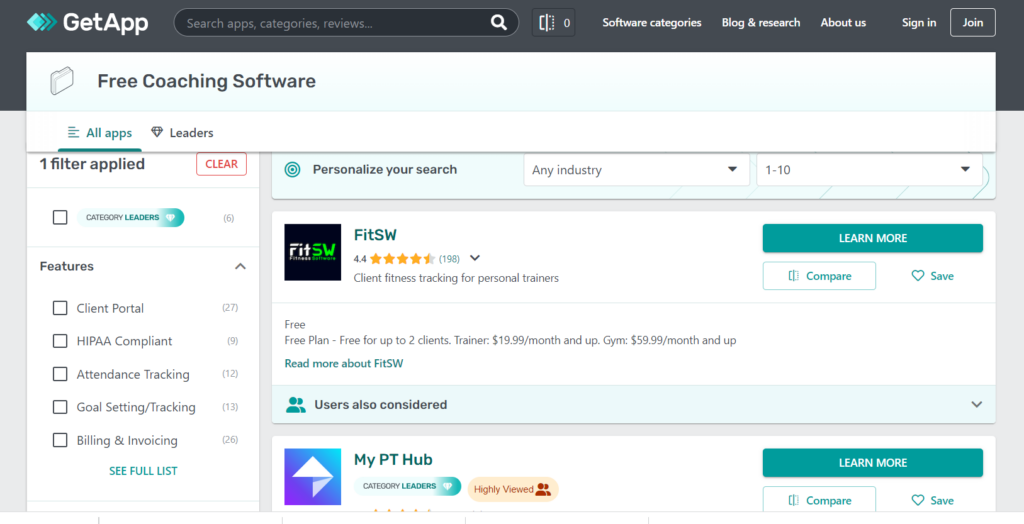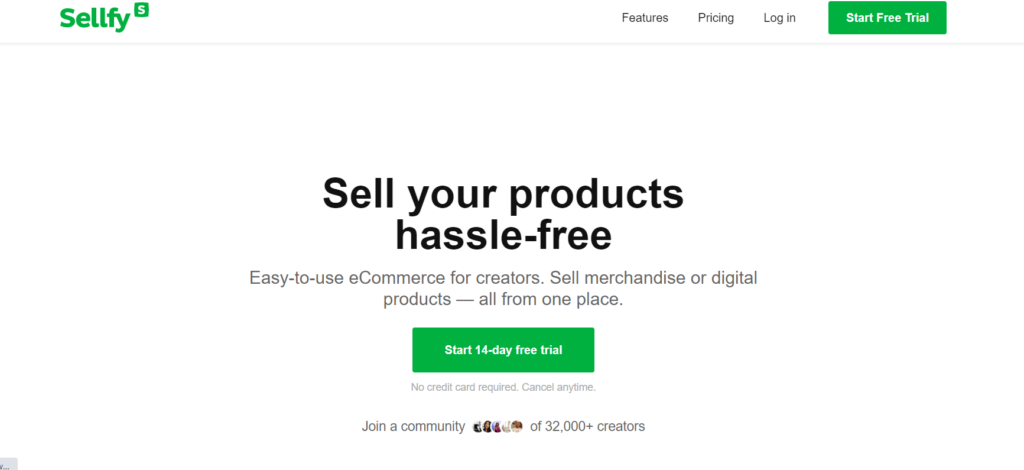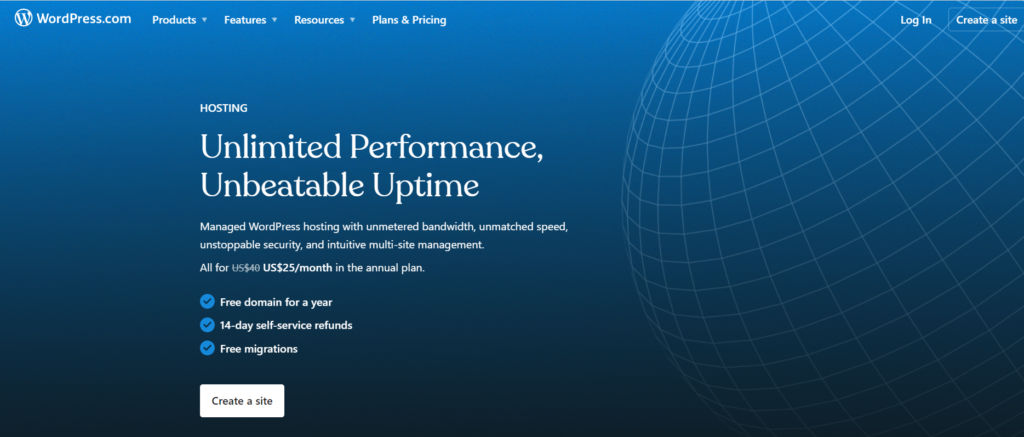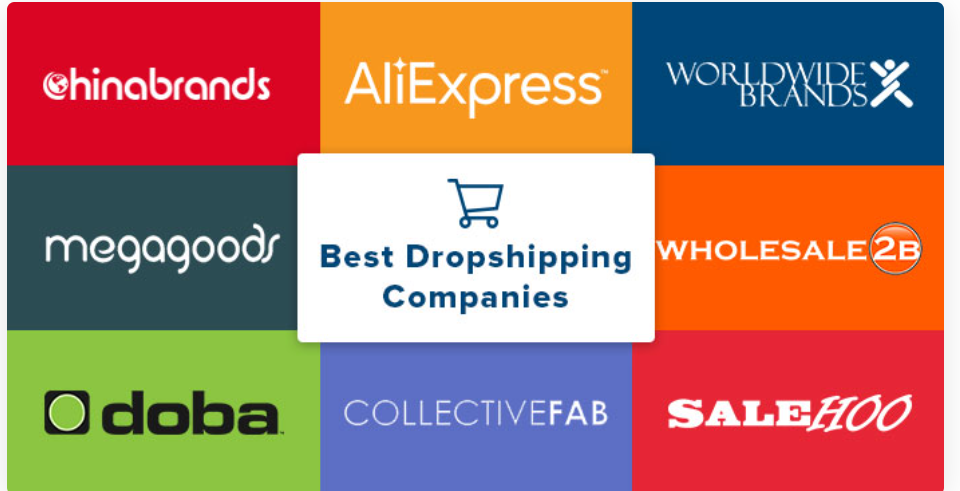How to make money with affiliate marketing in 2023
In the digital age, the phrase “how to make money with affiliate marketing” has become synonymous with unlocking financial opportunities online. If you’ve ever wondered how individuals leverage the power of affiliate partnerships to generate income, you’re in the right place. This guide is your comprehensive manual to unraveling the secrets of affiliate marketing and turning them into a consistent revenue stream. From selecting the right affiliate programs to optimizing your promotional strategies, each section is tailored to provide you with actionable insights. Get ready to embark on a journey where your online presence transforms into a profitable venture, step by step.
If you’re eager to discover “how to make money with affiliate marketing,” you’re about to embark on a journey that could redefine your approach to online income. This guide is designed for both beginners and seasoned marketers, offering a step-by-step roadmap to effectively monetize your efforts. From understanding the fundamentals of affiliate programs to implementing advanced strategies, each section is crafted to empower you with the knowledge and skills needed to succeed in the lucrative realm of affiliate marketing. Get ready to turn your online presence into a revenue-generating powerhouse.

What is affiliate Marketing?
Affiliate marketing is a performance-based marketing strategy where individuals earn commissions for promoting other people’s products or services. Discover the fundamental principles that drive this dynamic industry.
Commission of Affiliate marketer
The commission structure of an affiliate program can vary widely and is determined by the merchant (the company or individual offering the affiliate program). It’s important for affiliates to carefully review the terms and conditions of each affiliate program to understand the commission structure, payment frequency, and any restrictions or requirements. Additionally, affiliates should consider the overall conversion rate of the products they are promoting, the reputation of the merchant, and the relevance of the products to their audience when evaluating different affiliate programs.
Some of it:
Percentage-Based Commission:
- This is the most common type of commission structure.. For example, if a product sells for $100 and the commission rate is 10%, the affiliate earns $10 for each sale.
Fixed Amount Commission:
- In this structure, affiliates earn a fixed amount for each sale or action they generate. This can be a set dollar amount, regardless of the total sale value. For instance, an affiliate might earn $50 for every sale, regardless of the product’s price.
Tiered Commission:
- Tiered commission structures reward affiliates with higher commissions as they reach certain milestones or achieve specific performance levels. For example, an affiliate might start with a 5% commission rate but earn 7% once they reach a certain number of sales.
Recurring Commission:
- Some affiliate programs offer recurring commissions for subscription-based products or services. Affiliates earn a commission not only on the initial sale but also on subsequent renewals or monthly payments made by the referred customer.
Hybrid Commission:
- Hybrid commission structures combine different models. For instance, an affiliate might earn a fixed amount for sign-ups and a percentage for actual sales.
Cost-Per-Click (CPC) or Cost-Per-Mille (CPM):
- While less common in affiliate marketing, some programs pay affiliates based on the number of clicks or impressions their referral links receive, rather than on actual sales. This is more typical in display advertising or content marketing.
Performance-Based Incentives:
- Merchants may offer bonuses or additional incentives for affiliates who meet specific performance targets, such as reaching a certain number of sales within a specified time frame.
Learn How to earn money with Affiliate Marketing
In this article we learn How to make money with affiliate marketing in details.
1. Overview of Affiliate Marketing
An affiliate program is a performance-based marketing strategy where businesses (merchants or advertisers) reward affiliates (publishers or marketers) for driving traffic or sales to their products or services through the affiliate’s marketing efforts. This symbiotic relationship benefits both parties: the merchant gains exposure and customers, while the affiliate earns a commission for successful referrals.
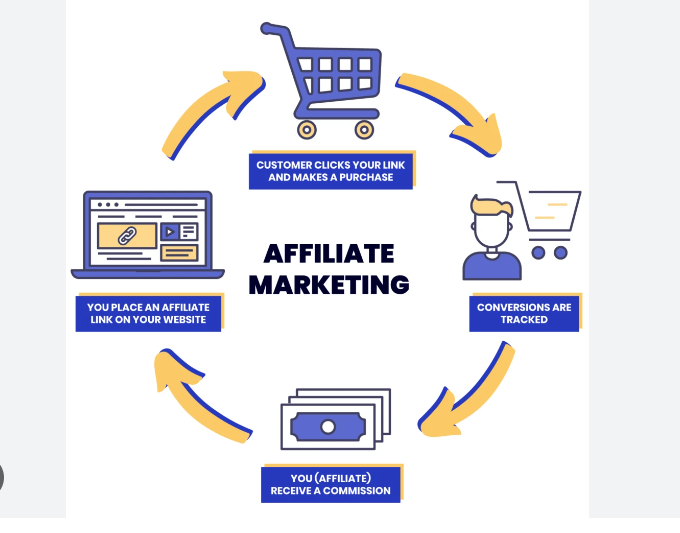
overview of the key components of an affiliate program:
- Know the Merchant, The business or individual offering the affiliate program.
- Sets commission rates and terms for affiliates.
- Know Affiliate (Publisher):
- The individual or entity that promotes the merchant’s products or services.
- Uses unique affiliate links to track referrals and sales.
- Earns a commission for each sale, lead, or action generated through their marketing efforts.
- Affiliate Network:
- In some cases, merchants use affiliate networks to manage their affiliate programs.
- Affiliate networks act as intermediaries, facilitating relationships between merchants and affiliates.
- Provide tracking, reporting, and payment processing services.
- Affiliate Link:
- A unique URL assigned to each affiliate to track their referrals.
- Includes a tracking code that identifies the affiliate responsible for the referral.
- Used to measure the performance of affiliate marketing efforts.
- Commission Structures:
- Merchants determine how affiliates are compensated.
- Common commission structures include percentage-based commissions, fixed amount commissions, recurring commissions, and tiered structures.
- Tracking and Analytics:
- Tracking tools monitor the performance of affiliate links.
- Analytics provide data on clicks, conversions, and other relevant metrics.
- Helps both merchants and affiliates assess the success of their marketing efforts.
- Cookies and Tracking Period:
- Cookies are used to track users who click on affiliate links.
- The tracking period defines how long a cookie remains valid.
- Determines the duration during which affiliates can earn commissions on a user’s actions.
- Payment Structure:
- Merchants typically pay affiliates on a regular basis (e.g., monthly) for the sales or leads generated.
- Payment methods and thresholds vary between affiliate programs.
- Affiliate Agreement:
- Outlines the terms and conditions of the affiliate program.
- Defines the rules affiliates must follow, including promotional methods and ethical standards.
- Promotional Methods:
- Affiliates use various marketing channels, such as websites, blogs, social media, email marketing, and paid advertising, to promote products or services.
- The chosen promotional methods should align with the merchant’s guidelines.
2. Getting Started with Affiliate of selecting a niche
To start affiliate marketing, the first crucial step is to identify your niche or area of interest.
Choose a niche that aligns with your passions or expertise, as this will not only make the process more enjoyable but also enhance your credibility with your audience.
Once your niche is established, research and select reputable affiliate programs within that space. Joining affiliate networks or individual programs is often the next step, where you’ll gain access to a variety of products or services to promote.
Building a platform, such as a blog, website, or a strong social media presence, is essential for creating a foundation to share your affiliate links and content. As you delve into content creation, focus on producing high-quality and valuable material that resonates with your audience, incorporating affiliate links seamlessly.

Finally, continuously optimize your strategies, track performance metrics, and stay informed about industry trends to refine and scale your affiliate marketing efforts over time.
Starting affiliate marketing is not just about making money; it’s about building a sustainable and authentic connection with your audience while generating income through strategic partnerships.
Discover effective strategies for researching and selecting the most suitable affiliate products for your audience.
Basically, we highly recommend creating around 70% informational content and 30% affiliate marketing content. This ratio will ensure that you have sufficient content to build authority while still having enough marketing assets to make money on your affiliate offers.
3. Joining Affiliate Programs
Most popular Affiliate Platforms

Popular Affiliate Network:
After making a niche in your blog post, open an affiliate account on affiliate platform. There are lots of platform being affiliate marketer, some of those are:

If you’re interested in becoming an affiliate on ShareASale, here’s a step-by-step guide to help you get started:
Sign Up:
- Visit the ShareASale website.
- Click on the “Affiliates” option in the top menu.
- Click on the “Sign Up” button.
- Fill out the required information, including your website details and promotional methods.
Application Review:
After submitting your application, ShareASale will review it to ensure that your promotional methods align with their policies.
Approval:
Once your application is approved, you’ll gain access to the ShareASale dashboard. Get commision on each sale
As of my last knowledge update in January 2022, ShareASale doesn’t have a fixed or standard affiliate commission ratio across all merchants. The commission rates for affiliates on ShareASale can vary widely and are set by individual merchants or advertisers who use the platform. Merchants have the flexibility to determine their own commission structures, and these can be either a percentage of the sale amount or a fixed amount per sale.
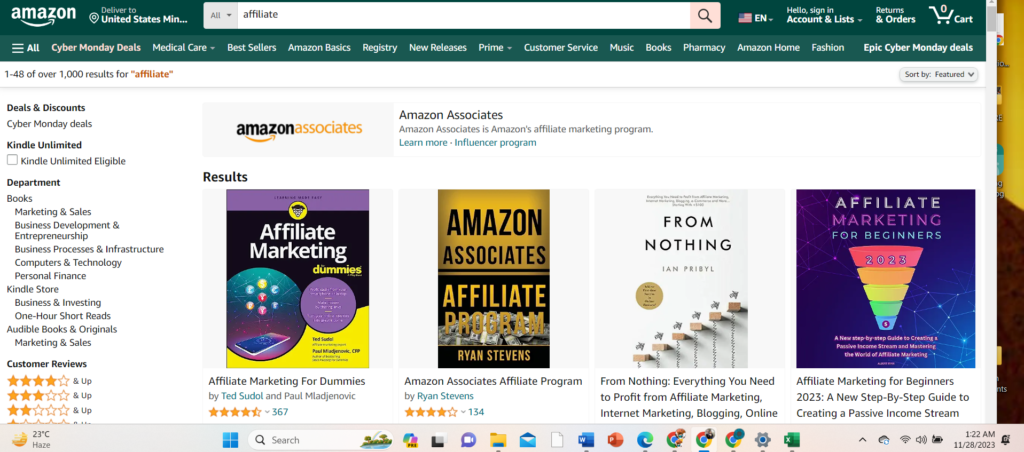
Becoming an affiliate marketer on Amazon.com opens the door to a vast online marketplace with limitless earning potential.
At first make an affiliate account on amazon site as an affiliate then choose the targeted product you want to affiliate. Then link the product with your blog writing by displaying the product. As visitors click on these links and make purchases, you earn commissions on the sales generated. Amazon’s affiliate program is renowned for its competitive commission rates and a robust tracking system that provides real-time insights into your performance.
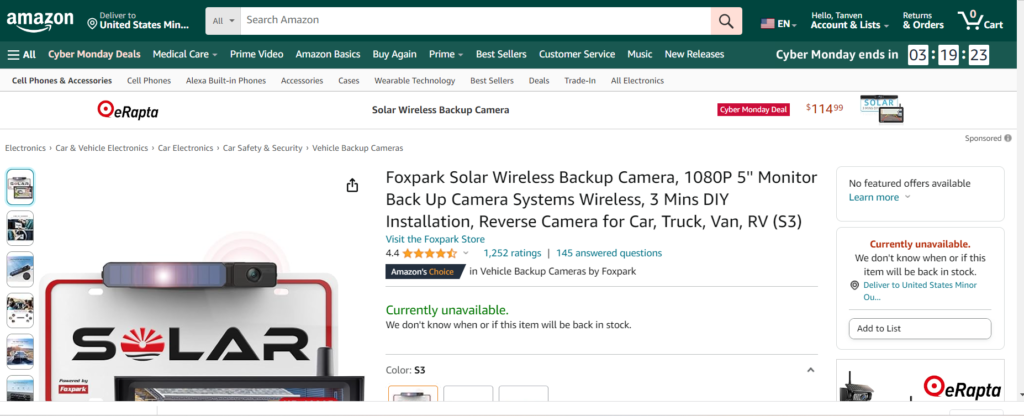
Regularly assess your strategies, explore new products, and leverage promotional tools offered by Amazon Associates to optimize your earnings. By tapping into the world’s largest online retailer, you can transform your online presence into a revenue-generating powerhouse as an affiliate marketer on Amazon.com.
Explore some of the top affiliate networks and understand the benefits of joining them.
As of my last knowledge update in January 2022, Amazon operates its affiliate program under the name “Amazon Associates.” The commission rates for Amazon Associates can vary based on the product category and the volume of sales an affiliate generates. It’s important to note that commission rates are subject to change, and Amazon may update its fee structure from time to time.
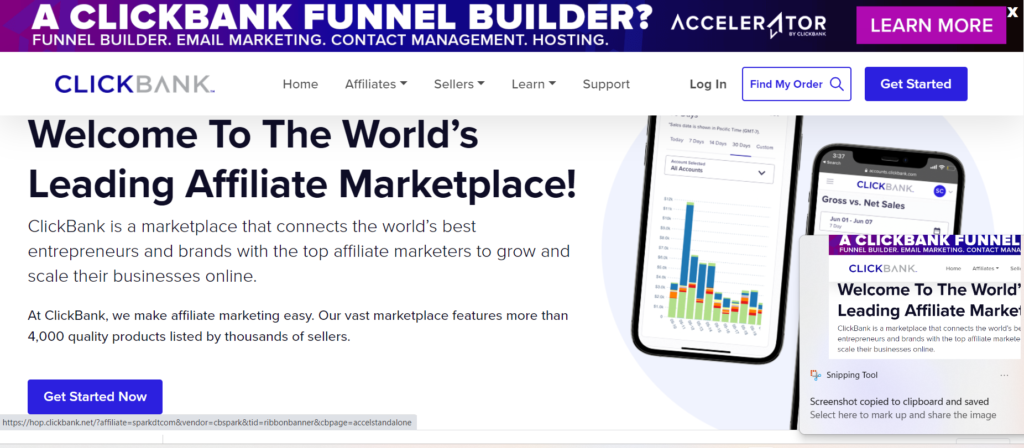
Joining the ClickBank affiliate program is a straightforward process. Here’s a step-by-step guide on how you can open a ClickBank affiliate account:
-Go to the ClickBank website at https://www.clickbank.com/.
-Click on the “Sign Up” or “Create Account” button on the homepage.
-Fill out the required information to create your ClickBank account.
-During the signup process, you’ll be prompted to create a unique ClickBank ID. Choose a memorable and relevant ID.
-Read and agree to ClickBank’s terms and conditions.
-Follow any additional steps or prompts to complete the account setup process.
-Once your account is set up, log in to your ClickBank account using the credentials you provided during the signup process.
-Browse through the available products and choose the ones you want to promote as an affiliate.
-For each product you want to promote, generate an affiliate link.
-Use the affiliate links to promote the products through various channels such as websites, blogs, social media, or email marketing.
-Log in to your ClickBank account regularly to track your sales and commissions. ClickBank provides detailed analytics to help you monitor the performance of your promotional efforts.
Other Platforms:
eBay
5. Content Creation for Affiliates

Creating compelling content for affiliate marketing is crucial for attracting and engaging your audience.
Here are some tips to help you create effective content for your affiliate products:
- -Before creating content, identify your target audience. Understand their needs, preferences, and pain points.
- -Select affiliate products that align with your niche and audience. Promoting products that resonate with your audience increases the likelihood of conversions.
- -Offer valuable information that educates or entertains your audience. This could be in the form of blog posts, videos, infographics, or other types of content..
- -Craft persuasive and compelling copy to encourage your audience to take action.
- -Storytelling is a powerful tool. Share personal experiences or use case studies to illustrate how the affiliate product has positively impacted someone’s life.
- -Use relevant keywords, create descriptive meta tags, and follow SEO best practices to improve the visibility of your content in search engine results.
- -Visual content, such as images, infographics, and videos, can enhance the appeal of your content.
- -Integrate affiliate links naturally within your content. Avoid being overly promotional, and instead, focus on providing value.
- -Use content to build an email list. Offer valuable resources or incentives in exchange for your audience’s email addresses.
- -Be genuine and authentic in your content. People appreciate honesty, and building trust is essential for successful affiliate marketing..
- -Regularly analyze the performance of your affiliate marketing efforts. Track clicks, conversions, and other relevant metrics to understand what is working well and where you can make improvements.
Remember, consistency is key. Regularly create and share valuable content to build a loyal audience over time. Adjust your strategy based on feedback and performance data to continually improve your affiliate marketing efforts.
6. Optimizing Affiliate Links and Strategies
Understand the science behind strategic placement of affiliate links for optimal conversion rates.
Learn how to craft compelling calls-to-action that encourage your audience to take the desired actions. Explore the importance of testing different strategies and optimizing your approach for better results. Discover tools and techniques for tracking your affiliate marketing performance and gaining valuable insights.
Always check the link through the link checker.
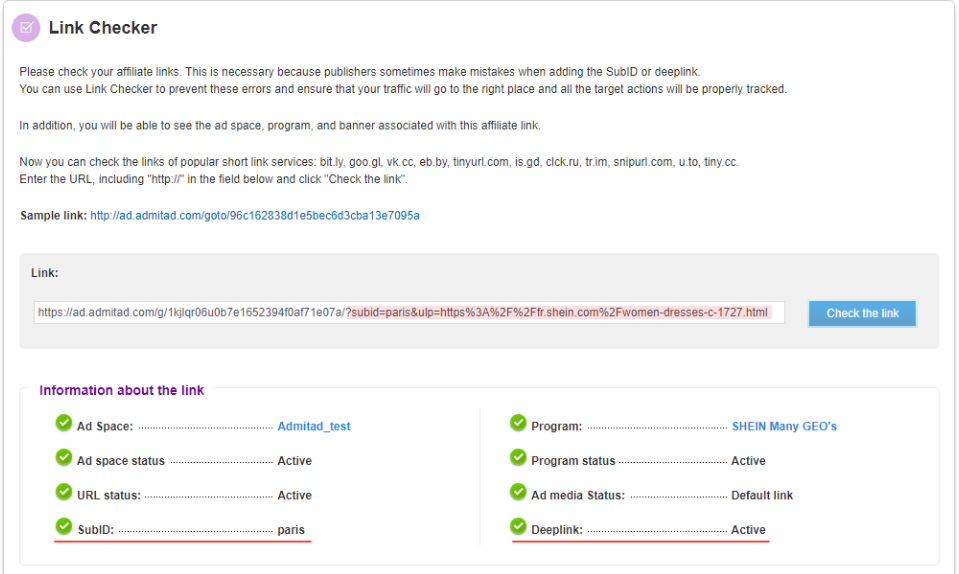
7. Compliance and Legal Considerations
Navigate the legal landscape of affiliate marketing by understanding the importance of transparent disclosure. Explore key guidelines set by the Federal Trade Commission (FTC) and ensure your affiliate marketing practices align with regulations. Understand the importance of privacy and GDPR compliance in the digital marketing landscape.
8. Building Trust with Your Audience
Discover the importance of delivering value to your audience and building a relationship based on trust.
Learn why honesty and transparency are the cornerstones of successful affiliate marketing and how to implement them in your strategy.
Explore strategies for effectively responding to audience feedback and building a community around your brand.

9. Scaling Your Affiliate Marketing Business
Scaling your affiliate marketing business involves expanding your reach, increasing your income, and optimizing your processes.
Scale your affiliate marketing efforts:
- Relying on a single traffic source can be risky. Explore and diversify your traffic channels. This could include SEO, social media marketing, email marketing, paid advertising, and more.
- Instead of promoting only a few products, consider expanding your range. This doesn’t mean promoting unrelated products, but finding complementary ones that resonate with your audience. A diverse product portfolio can lead to more income streams.
- With the increasing use of mobile devices, ensure that your website and content are mobile-friendly..
- Automate repetitive tasks to save time and increase efficiency. This could include email marketing sequences, social media scheduling, and analytics tracking. Automation tools help you focus on high-impact tasks.

- As your business grows, consider hiring freelancers or building a team to help with content creation, marketing, and other tasks. Delegating responsibilities can free up your time to focus on strategy and scaling.
- Develop content that remains relevant over time. Evergreen content, such as tutorials, guides, and resource lists, can continue to attract organic traffic and generate affiliate income long after it’s published.
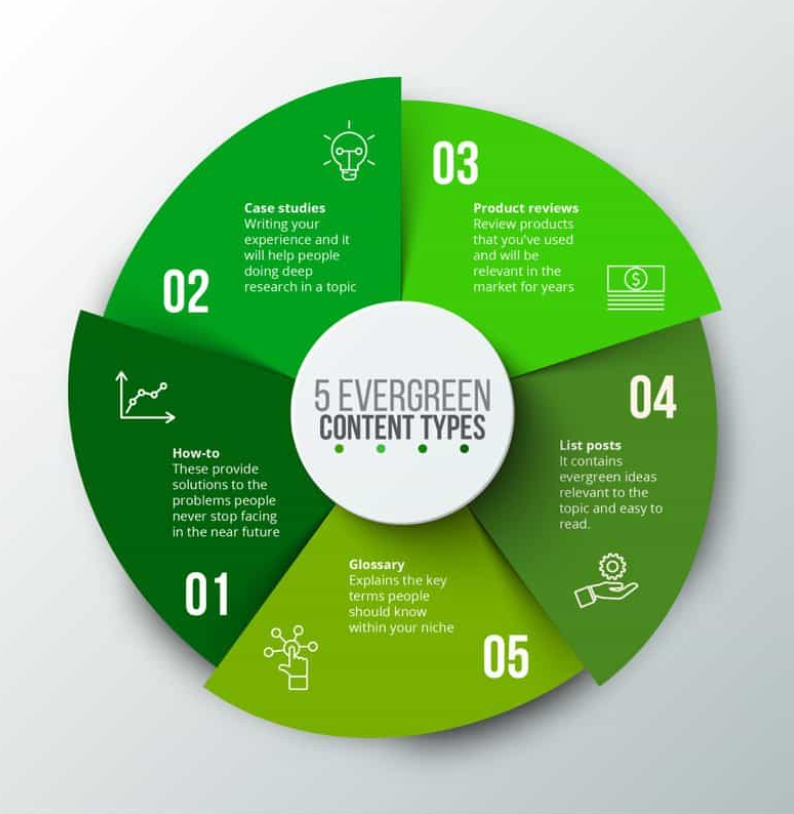
- If your budget allows, consider investing in paid advertising to drive targeted traffic to your affiliate offers. Platforms like Google Ads, Facebook Ads, and other paid channels can provide quick results if managed effectively.
- As you build a successful track record, consider negotiating higher commission rates with your affiliate partners. Some merchants are open to increasing commissions for high-performing affiliates.
- Use analytics tools to track the performance of your campaigns. Analyze data to understand what is working and what needs improvement. Adjust your strategies based on performance insights.
- Research and enter new niches that align with your expertise and interests. Exploring different niches can open up new opportunities for affiliate partnerships and audience growth.
- Develop a sales funnel to guide your audience from awareness to conversion. This could involve creating lead magnets, email sequences, and retargeting campaigns to maximize the chances of conversion.
- Affiliate marketing is dynamic, with trends and strategies evolving. Stay informed about industry changes, algorithm updates, and new technologies. Adapt your strategies accordingly to stay competitive.
Remember, scaling takes time and consistent effort. Be patient, test different strategies, and iterate based on the results you see. Regularly evaluate your business processes and adjust your approach to align with your goals and the needs of your audience.
11. Troubleshooting and Overcoming Challenges of affiliate
While affiliate marketing can be a lucrative business model, it comes with its own set of challenges.

Here are some common challenges associated with affiliate programs:
Dependence on Merchant Performance:
- Affiliate marketers rely on the performance of the merchants they promote. If the merchant’s product quality, customer service, or overall business practices are subpar, it can negatively impact the affiliate’s reputation and income.
Commission Structure Variability:
- Affiliate programs may have different commission structures, and these can change over time. A sudden reduction in commission rates or changes in the program’s terms can impact the affiliate’s expected income.
Cookie Duration and Tracking Issues:
- Cookies are used to track referrals, but they have a limited duration. If a user doesn’t make a purchase within that timeframe, the affiliate may not receive a commission. Additionally, ad blockers and privacy concerns can interfere with accurate tracking.
Intense Competition:
- Many niches within affiliate marketing are highly competitive. Breaking through the noise and standing out can be challenging, especially for beginners. Success often requires a strategic and unique approach.
Product Quality and Reputation:
- The quality and reputation of the products or services you promote reflect on your own brand. If the products are substandard or the merchant has a poor reputation, it can harm your credibility and trust with your audience.
SEO Challenges:
- Search engine optimization (SEO) is crucial for organic traffic, but it’s also highly competitive. Achieving high rankings requires time and effort, and algorithm changes can impact your site’s visibility.
Ad Blocking:
- The rise of ad blockers can prevent affiliate links and banners from being displayed, reducing the chances of earning commissions. This is particularly relevant for affiliates who rely heavily on display advertising.
Legal and Compliance Issues:
- Adhering to legal and ethical standards is essential in affiliate marketing. Failure to disclose affiliate relationships, misleading advertising, or violating other regulations can lead to legal issues and damage your reputation.
Payment Delays and Reliability:
- Some affiliate programs may have payment delays or reliability issues. It’s crucial to choose reputable affiliate programs and merchants with a track record of timely and reliable payments.
Ever-Changing Technology:
- The technology landscape is constantly evolving. Affiliates need to stay updated on new tools, platforms, and marketing techniques to remain competitive.
Niche Saturation:
- In popular niches, saturation can be a challenge. The more affiliates promoting the same products or services, the harder it is to capture a share of the market. Finding unique angles or niches can help overcome this challenge.
Despite these challenges, many affiliates find success by staying informed, adapting to changes, and continually refining their strategies. Building strong relationships with reputable merchants and focusing on providing value to your audience are key components of a sustainable affiliate marketing business.
12. Measuring Success and Setting Goals
Identify the key performance indicators that matter most in affiliate marketing and how to measure them. Learn the importance of setting realistic and achievable goals for your affiliate marketing business. Celebrate your successes along the way and acknowledge the milestones you achieve in your affiliate marketing journey.
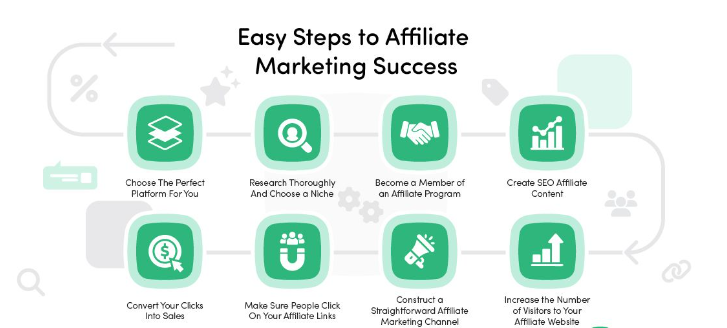
Conclusion
Embark on your affiliate marketing journey armed with knowledge and strategies to succeed. Follow this comprehensive guide, and watch as your efforts translate into a lucrative and sustainable income stream through affiliate programs. While affiliate marketing offers the potential for passive income, it’s essential to approach it as a long-term business. Success often comes gradually, and building a solid foundation through ethical practices, audience engagement, and strategic partnerships is crucial. With dedication and a commitment to providing value, affiliate marketing can be a sustainable and rewarding source of income. Happy marketing!
How to make money with affiliate marketing in 2023 Read More »



